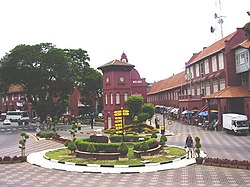1. BANANA LEAF

One of the great south Indian cuisines we have the previlage on eating o\n a daily basis shoul we choose is, of course Chettinad cuisine. Chettinad cuisine is the cuisine of the chettinad region of Tamil Nadu state in south India. If you love rice, you will definitely love the banana leaf rice.


A mixture of curry sauces is poured on the rice. Always ask for the sauces to be mixed , i.e. fish + chicken + dhal .. let it soak through your rice and just die from the awesome aroma and taste. This is called nasi ‘banjir’ (flooded rice) and imparts a multifaceted taste to the rice. Many eat the sauced soaked rice with their bare fingers and the aroma actually stays with you long after you have washed your hands. This is part of the appeal of eating Nasi Kandar!

The Malaysian nasi lemak consists of a hot spicy sauce (sambal), hard boiled egg, cucumber slices, small dried anchovies (ikan bilis) and roasted peanuts at its core and to this you may add sambal cuttlefish, fried chicken, cockle, stir fried water convolvulus (kangkong), pickled vegetables (achar) or beef rendang (beef stewed in coconut milk and spices).
In banana leaf rice
In banana leaf rice, white rice is served on a banana leaf with an assortment of vegetables, curried meat or fish, pickles, and the super addictive papadum ( look like giant, round, flat crisps). Most of the time, however, only the gravy of the curry will be served and no meat is served as it is meant to be a traditional Indian vegetarian dish but since I am no vegetarian, I love mine with mutton redang and dry chicken curry!
2. NASI DAGANG

Nasi dagang is another fantastically tasty dish, consisting of rice steamed in coconut milk, fish curry and extra ingredients such as fried shaved coconut, solok lada, hard-boiled eggs and vegetable pickles.
It is a well-known breakfast food in the states on the East Coast of Peninsular Malaysia, such as Terengganu and Kelantan. The most famous Nasi dagang of Terengganu comes from a place called Kampung Ladang, an area within the Kuala Terengganu district. I have not tried the one from Kampung Ladang but my colleague who covers the East Coast says it’s truly the best.
3.Satay
After the Sang Har Mee, we will definitely drag you to eat, the Sentul Satay. Close analogues would be the Yakitori from Japan, the Shish Kebab from Turkey, the Sosatie from South Africa.. oh, and my most recent discovery was the Chuan from China!
Meats on sticks over a BBQ – basic yet effective. Tapping into that childhood ‘fun’ way of eating your food. For satay, the must have ingredient which gives the dish its characteristic yellow colour derived from tumeric. Serve it up with a spicy peanut sauce dip, or peanut gravy, slivers of onions and cucumbers, and ketupat (rice cakes).
4.Nasi Kandar
5.Nasi Lemak
Nasi Lemak is a must! The name itself ” rice in cream” is derived from the cooking process where regular white rice is literally soaked in coconut cream and then steamed to give a gorgeous, aroma of coconut-perfumed white rice that is then wrapped in banana leaf or served on a plate and eaten with the other side dishes mentioned above. Sometimes a knotted pandan leaf, or ginger or a stalk of lemongrass is thrown it to make the rice all the more fragrant.












